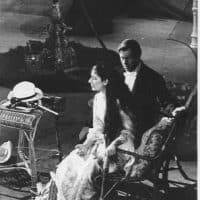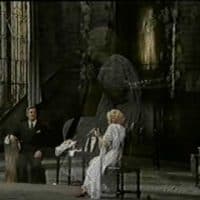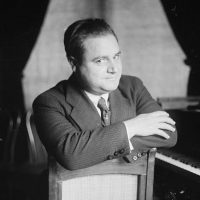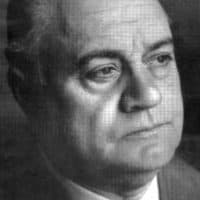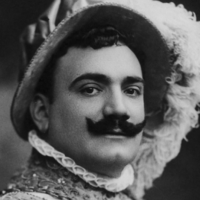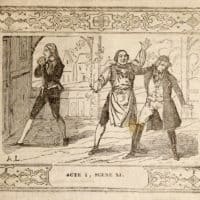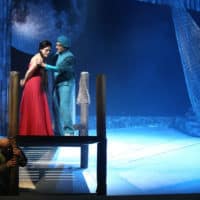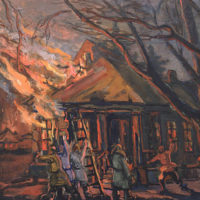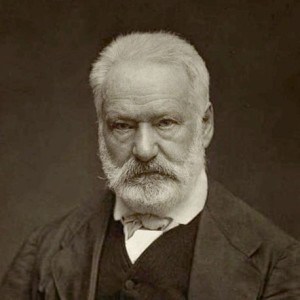
Victor Hugo (1802–1885) is most famous as the author of novels like Les Misérables and The Hunchback of Notre-Dame. Both of which led to popular pieces of contemporary musical theater. Less known in the English-speaking world are his fifteen plays. Even as Hugo’s most popular novels were adapted into global blockbuster musicals, his plays provided material for dozens of operas, several of which are still frequently performed today.
Many operas that failed or enjoyed only moderate success have been entirely forgotten, so it is impossible to compile a complete list of operas based on Hugo’s plays. However, evidence exists for operatic adaptations of eleven of the fifteen plays—all except Inez de Castro (Hugo’s first play, which he wrote at the age of fifteen and which flopped immediately), Milles francs de récompense (never staged in Hugo’s lifetime), The Twin Brothers (incomplete), and Cromwell. In fact, Cromwell almost escaped from this list: Piave wrote a libretto based on it for Verdi, but the composer deemed it dramatically unsuitable and Hernani was substituted instead.
The happy result of this substitution was Verdi’s opera Ernani (1844), a smash hit in its time and still a mildly popular piece for opera companies to perform. The plot is as absurd and overdrawn as one would expect from a Romantic melodrama:
A beautiful woman (Doña Sol, renamed Elvira in the opera) is loved by a king (Don Carlos), a bandit chief (Hernani), and her guardian (Don Ruy Gomez de Silva). She loves Hernani, but, in a somewhat twisted series of events, she ends up being kidnapped by Don Carlos. Hernani convinces Silva (to whom he owes his life, as de Silva hid him from the king) to join forces to get Doña Sol back, and promises to commit suicide (and thus pay his debt) at Silva’s signal. They join a plot against Don Carlos, which is discovered, but the king magnanimously pardons them and allows Hernani and Doña Sol to marry. Silva, consumed by jealousy, gives the appointed signal and demands that Hernani honor his promise to kill himself. He does so, but not before Doña Sol discovers the situation and kills herself as well.
The play inspired riots by classicists who considered it an attack on their values, and this controversy was part of what made it an appealing candidate for operatic adaptation. In fact, Verdi was not the only composer to adapt Hernani: Gabussi (1834), Mazzucato (1843), Laudamo (1851), and Hirschmann (1908) all composed versions as well. But Verdi’s version was by far the most successful, which is understandable given its ravishing music. Elvira’s aria “Ernani, Ernani involami” (videos: Callas, Moffo, Meade, Sutherland) is a showpiece for Verdi sopranos, and the opera also contains several beautiful and dramatically exciting ensembles, such as the Act I trio between Elvira, Ernani, and Don Carlo (video) and the Act IV trio between Elvira, Ernani, and Silva (video).
Despite other composers’ (relative) failures with Ernani, Verdi was not the first to successfully base an opera on a Hugo play. That honor goes to Donizetti for his 1833 opera Lucrezia Borgia, based on Hugo’s Lucrèce Borgia. The plot is roughly historically inspired: Lucrezia is a vindictive poisoner with a jealous and equally murderous husband. In the play, Lucrezia is the victim of her own plots—she dies after accidentally poisoning her son. The opera contains a famous Brindisi, “Il segreto per esser felici” (videos: Horne, Garanca, Coote), and several other notable arias, such as Gennaro’s “Di pescatore ignobile” (videos: Carreras, Giordani, Kraus), the Duke’s “Vieni, la mia vendetta” (videos: Flagello, Vassallo) and Lucrezia’s “Com’è bello” (videos: Caballe, Gruberova, Fleming).

Even if Donizetti can lay claim to the first success, the longest-lasting hit was undoubtedly Verdi’s. His Rigoletto (1851), an adaptation of Hugo’s Le roi s’amuse, was the 9th-most-perfomed opera in the world in the 2012–2013 season (according to Operabase). Hugo’s play was banned in France when it was first published, ostensibly because it was immoral but actually because it seemed dangerously like negative commentary about the king. (Although the play was based on the life of King Francis I, there were many parallels with Louis-Philippe.) However, Verdi’s operatic adaptation was not prohibited and ran for over 100 performances in Paris. Hugo saw it and conceded that it was better than the play, especially admiring “Bella figlia d’amore” (video). The quartet is perhaps the best excerpt from the opera, but the most universally recognizable piece is undoubtedly the canzone “La donna è mobile,” sung by the Duke (who, in the opera, replaces the king from the play) about the flighty nature of women (videos: Pavarotti, Lanza, Florez, Kaufmann, Domingo). Even non-opera-lovers recognize the tune: it appears in European football chants, numerous television advertisements, an episode of The Aristocats (in the form of the music hall song “Ta-ra-ra Boom-dee-ay”), at least three Star Trek episodes, and far too many other places to list here!
One final Hugo play inspired operatic adaptations that are still performed: Angelo; or, The Tyrant of Padua is the basis for Ponchielli’s La Gioconda (1876) and Mercadente’s Il giuramento (1837). (Cui, Villate, and Bruneau also composed versions, in 1876, 1880, and 1928, respectively, but they are entirely unknown and unperformed today.) The story is as follows:
As a young girl, Catarina saves an old woman from death, and the woman gives her a rosary in thanks. Many years later, Catarina is married to the jealous Angelo, who has taken the actress La Tisbe as his lover. La Tisbe loves Rodolfo, who loves (and is loved by) Catarina. Angelo is informed of a tryst between Catarina and Rodolfo, and, to protect his honor, he commands Catarina to commit suicide. But La Tisbe—present in her capacity as Angelo’s mistress—recognizes the rosary Catarina wears as her mother’s and realizes that, in spite of her amorous jealousy, she has a duty to protect Caterina. She offers to provide poison for the suicide, but actually provides a sleeping drug that only produces the appearance of death. Rodolfo does not realize this and, furious at her complicity in his beloved’s death, stabs La Tisbe. Just then, Catarina awakens and is reunited with Rodolfo, who realizes that La Tisbe actually saved Catarina and is horrified by what he has done.
La Gioconda is the more famous adaptation, notable for the aria “Voce di donna o d’angelo” (videos: Amadini, Podles) and for the “Dance of the Hours” ballet from Act III (video), which features prominently in Disney’s Fantasia (in a scene complete with tutu-clad hippos, ostriches, alligators, and elephants). The same ballet is mentioned in Ulysses, and tunes from it are the basis of the popular song “Hell Muddah, Hello Faddah.” Although Il giuramento is performed much less often than Ponchielli’s adaptation, it is one of Mercadente’s two best-known operas (along with La vestale). (If you are unfamiliar with Il giuramento and would like to explore it, I highly recommend beginning here on YouTube and following the path of video responses, which takes you through all of Act I, plus some other highlights.)
Hugo’s seven remaining plays were all adapted into operas multiple times, but none of the operatic adaptations received lasting success. Nonetheless, here are six of the remaining plays and the composers they inspired, along with some notes:
- Marion Delorme—Heller (1856), Bottesini (1862), Pedrotti (1865), Berbier (1875), Pedrell (1880s), Tarantini (1910)
- Ruy Blas—Bezansoni (1843), Poniatowski (1843), Rota (1858), Glover (1861), Chiarmonte (1862), Zenger (1868), Marchetti (1869), Goddard (1891), Pietri (1916)
- Mary Tudor—Ferrari (1840), Pacini (1843), Bognar (1856), Kashperov (1859), Balfe (1863), Gomez (1879), Wagner-Regeny (1935), Battista (unknown). Note: Arrigo Boito (famous for his collaboration with Verdi on Otello and Falstaff) was the librettist for Gomez’ adaptation
- Les Burgraves—Salvi (1845), Sachs (1924)
- Amy Robsart—Donizetti (1829). Note: The opera, Elisabetta al castello di Kenilworth is actually a mixture of Hugo’s play and Scribe’s Leicester. It was Donizetti’s first opera set in the Tudor period, and it focused on the character of Elizabeth I, but it is not considered part of his “queens trilogy”
- Torquemada—Rota (1943), Demme (unknown)
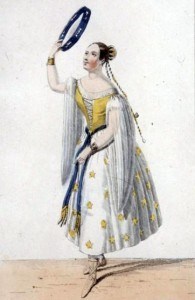
La Esmeralda, the one Hugo play not already mentioned, did not inspire any still-performed operas, but it has a fascinating history nonetheless. Although it is often included in collections of his plays, Hugo actually wrote La Esmeralda as an opera libretto, adapting it from his own novel Notre Dame de Paris. It is a strikingly unfaithful adaptation—for instance, Phoebus in La Esmeralda is a noble hero who sacrifices his life to clear Esmeralda’s name and save her from execution, whereas Phoebus in Notre Dame de Paris is a womanizer who is happy to watch Esmeralda get executed for supposedly murdering him. The first music for Hugo’s libretto was composed, with Hugo’s blessing and oversight, by Bertin. (You can listen to the resulting opera here.) The opera failed miserably when it premiered in 1836, which didn’t prevent other composers from trying to use the same material. A lot of them did: Mazzucato (1838), Prevost (1840), Valero (1843), Poniatowski (1847), Dargomijsky (1847), Battista (1851), Lebeau (1857), Bizet (1859), Fry (1864), Welterhahn (1866), Muller (1867), Campana (1869), Pedrell (1875), Camps y Solar (1879), and Mesquita (1888). (Note: Because the libretto is an adaptation of Notre Dame de Paris, it is difficult to distinguish between operas based on the novel and those based on the play/libretto, so some of the above may be based on the novel. There are also at least six operas not listed here that were based directly on the novel.) Fry’s adaptation was a smash hit in its time, playing for 350 performances in America, but the composer was never able to interest European houses in his work. Campana was more fortunate—after a Russian premiere, his opera moved to London with Adelina Patti playing Esmeralda.
Hugo’s plays were never as popular has his novels—not in his time and not now. They are often criticized for being overly melodramatic, lacking good pacing, resolving themselves too quickly (usually through deaths), and generally not living up to Hugo’s skills as a poet and writer. Although most of them were fairly popular in Hugo’s day, they are almost never produced now because of these perceived failings. But however they fare as dramas per se, Hugo’s plays are undeniably attractive source material for operas. This article mentions over fifty operatic adaptations, and its lists are certainly incomplete. Among these operas are gems that are still beloved and performed today: Rigoletto, Ernani, Lucrezia Borgia, and La Gioconda. Thank you, Victor Hugo—the opera world is in your debt.
[toggle title=”Sources”]Dorgan, Paul. “Victor Hugo.” Utah Opera. <http://www.utahopera.org/connect/item/64-victor-hugo>.
Halsall, Albert. Victor Hugo and the Romantic Drama. University of Toronto Press: 1998. <http://www.jstor.org/stable/10.3138/9781442683068>.
Kosovsky, Bob. “Re: More Victor Hugo Operas.” Posting on the Opera-L e-mail list. 26 Feb. 2002. <http://listserv.bccls.org/cgi-bin/wa?A2=OPERA-L;u1GohQ;20020226164615-0500D>.
Novello, J. Alfredo. The Musical World: Volume 51. 1873. <http://books.google.com/books?id=HpQPAAAAYAAJ>.
Waterhouse, Francis. “Victor Hugo’s Operas.” The Sewanee River Review. 29(2) Apr. 1921. John Hopkins University Press. 198–210. <http://www.jstor.org/stable/27533418>.
[/toggle]